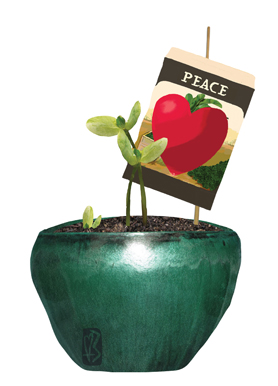As far as Bashir Ahmed is concerned, members of Edmonton’s Somali community who get involved in the drug trade deserve justice that is both swift and terrible.
“I strongly believe that anyone who is not a citizen, or is even a naturalized citizen, who does the wrong things, breaks the law and becomes a threat to society, he or she must be deported. Period,” he says. “They are not helping their parents, they are not helping themselves, they are not helping the system. So why should we keep them here?”
In his role as executive director of the Somali Canadian Education and Rural Development Organization, Ahmed leads an initiative to keep youth in the city’s rapidly growing Somali community out of the hands of drug dealers and gang recruiters. “Parents always come up to me and say, ‘Bashir, we have to push the government to adopt this kind of policy,'” he says.
Edmonton has the largest Somali community in Western Canada, with a population estimated to be between 15,000 and 25,000. Most of its members’ experiences are like countless other immigrant groups who came before them: Many have escaped danger and poverty in their homeland to build better lives for their families in Canada, where they were drawn to Edmonton’s booming economy.
Somalis, Ahmed explains, are hard-working, family oriented, law-abiding people. But a cloud hangs over them. In the past decade,more than two dozen young Somali men have died violently in Alberta, many because of their involvement in the drug trade. Most of the killings have gone unsolved.
At the height of the violence in late 2008, three Edmonton men were shot to death in separate incidents within 30 days. As grief and anger rose, some leaders in the Somali community accused the police of not doing enough to solve the killings. Police responded that investigators were hitting brick walls because potential witnesses weren’t cooperating.
Ahmed looks back on those days of strained relations and shakes his head. “There is no phobia about the police.” The angry rhetoric of some community leaders did not reflect the feelings of the vast majority of Somalis in Edmonton, he says. Nonetheless, senior brass at the Edmonton Police Service realized that they needed to build bridges into the community if they wanted to solve these and any future crimes.
